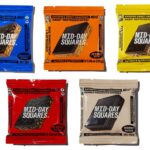Some companies and organizations are made up of many brands, not just one. When I was VP of Marketing at ConAgra’s Snack Food division, the company had a portfolio of at least 15 snack food products they marketed. Each brand had its own look, feel and personality. The only connection was in tiny type on the package that said a division of ConAgra Foods.
But how can small and mid-sized organization manage the complexity of multiple products or services? How can they be tied together and connected?
Architecture and Brand Portfolios
Brands are part of a communication or messaging system. Marketing pros like to think of it as brand architecture. The traditional approach is either a house of brands or a branded house.
HOUSE OF BRANDS: ConAgra Foods has brands like Slim Jims, Orville Redenbacher Popcorn, David’s Sunflower Seeds, etc. Each brand is unique and unrelated to the others. The Coca-Cola Company owns Coke, Dasani, Tropicana, Fanta, Sprite and Smart Water and on and on.
BRANDED HOUSE: A branded house is like McDonalds. McMuffin, McFlurry, McGriddle. Every brand is tied together with the Mc. Apple’s portfolio is the same – iPhone, iMac, iPad.
Five Questions for Building Brand Architecture
- Are you serving different audiences? If so, you may need unique brands like a House of Brands. P&G has a huge portfolio of brands but each product is targeted to a very narrow and specific audience.
- Who needs to understand the breadth of your portfolio? Maybe the brands need to be communicated to buyers at grocery chains but often, different buyers purchase goods in different categories. The milk buyer is probably not the same buyer for soft drinks.
- What is the connecting message? How can you communicate one common theme or thread of an idea across all the services you provide? A company who offers services might have five different areas they serve. Some ad agencies have PR divisions, Creative Services Divisions, Media Buying Division all under the same umbrella brand and tied together with the corporate identity like Leo Burnett Creative, Leo Burnett Creative, Leo Burnett Digital, etc.
- Are there points of intersections where the brands meet? For some companies, the brands may not have any real connections except at certain events (Industry Trade Shows). Perhaps there are opportunities to deliver a shared message to a key constituency of industry buyers.
- Best media for your message. Once you have a clear picture of who you want to reach, what your message is and the resources available, you can begin to look at tactics for getting the word out to the right audience. This should be the last step – and only start when you are really clear on the earlier points.
Companies or organizations that market portfolios of brands need to get their strategy and intention clear up front before they jump into the tactics.
It is hard to know where you are going without a map (or a GPS on an iPhone).
Need help finding your path forward with your portfolio of brands or services? Put me in your GPS or call me at 919 720 0995.
Photo credit: https://en.wikipedia.org/wiki/OpenStreetMap





